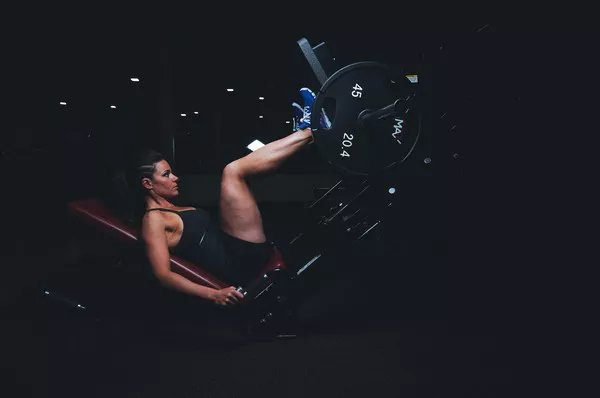The high lunge is a powerful and versatile exercise widely practiced in yoga, fitness training, and rehabilitation programs. Known for its ability to build strength, enhance flexibility, and improve balance, the high lunge is a foundational pose that benefits both beginners and advanced practitioners alike. But what exactly is the high lunge? How does it work, and why should it be part of your regular fitness routine? This article provides an in-depth exploration of the high lunge, from its mechanics and benefits to proper technique and ways to incorporate it effectively.
High lunge, sometimes called crescent lunge, involves stepping one foot forward and bending the front knee deeply while keeping the back leg extended and straight. This position opens up the hips, stretches muscles, and challenges your stability. The pose looks simple but demands strength, control, and focus. It engages multiple muscle groups simultaneously, making it an excellent exercise for building overall body fitness.
What Is the High Lunge and Where Does It Come From?
The high lunge is a common posture in yoga, fitness, and athletic training, derived from traditional yoga poses such as Anjaneyasana (low lunge) but performed with a taller torso and a more active back leg. Unlike the low lunge where the back knee rests on the ground, the high lunge keeps the back leg extended, requiring more balance and strength.
Historically, the lunge as a movement has been used in martial arts, dance, and functional fitness due to its ability to mimic natural walking or running strides while adding resistance and control. The high lunge became especially popular in modern yoga classes as a transition pose that builds strength and opens the hips. Fitness trainers also integrate it into workouts to develop lower body power and mobility.
How Does the High Lunge Benefit Your Body?
The high lunge offers a comprehensive workout that targets several major muscle groups. Primarily, it strengthens the legs—engaging the quadriceps, hamstrings, glutes, and calves. Holding the lunge position activates these muscles as they work to stabilize the body, support balance, and control movement.
Besides strength, the high lunge also improves flexibility. The deep bend in the front knee stretches the hip flexors and groin muscles of the back leg, which are often tight from prolonged sitting. By regularly practicing high lunges, you can increase hip mobility and reduce stiffness.
Another key benefit is improved balance and core stability. Maintaining an upright torso and steady position requires engaging the abdominal muscles and back muscles, promoting better posture and coordination. This makes the high lunge an effective functional exercise with real-world benefits for daily activities and sports.
Who Should Practice the High Lunge?
The high lunge is suitable for a wide range of people—from fitness beginners looking to improve leg strength and flexibility to athletes wanting to enhance performance. Because it can be modified for different skill levels, it’s accessible to many.
Beginners may start with shorter holds, a lower step, or support from a wall or chair for balance. More experienced practitioners can increase the depth of the lunge, hold the position longer, or add arm movements and twists to increase difficulty.
However, individuals with knee, hip, or ankle injuries should approach the high lunge cautiously. It’s important to listen to your body and avoid any pain or discomfort. Consulting with a healthcare provider or a trained instructor can help ensure the exercise is safe and effective.
How to Perform the High Lunge Correctly
Performing the high lunge with proper form is essential to gain benefits and avoid injury. Here is a step-by-step guide to help you execute the high lunge safely:
Begin standing tall with your feet hip-width apart.
Step one foot forward about three to four feet, ensuring the step is long enough to allow the back leg to extend fully.
Bend the front knee to approximately a 90-degree angle, keeping the knee aligned directly over the ankle.
Keep the back leg straight and active, pressing the heel toward the floor.
Square your hips to face forward and lift your torso upright.
Engage your core muscles to maintain balance and stability.
Raise your arms overhead with palms facing each other or bring them to prayer position at your chest.
Hold the position, breathing steadily, for 20 to 60 seconds or as long as comfortable.
Slowly step back to the starting position and repeat on the other side.
Maintaining alignment is key: avoid letting the front knee move beyond the toes, and don’t let your hips twist or sag. Focus on lengthening the spine and keeping shoulders relaxed.
What Common Mistakes Should You Avoid?
Like any exercise, improper form in the high lunge can reduce effectiveness and cause strain. Some common mistakes include:
Allowing the front knee to extend past the toes, which stresses the knee joint.
Dropping the hips unevenly or twisting the torso, which reduces stability.
Letting the back heel lift off the ground, lessening the stretch and balance challenge.
Holding your breath or tensing excessively, which can lead to fatigue.
Collapsing the chest or rounding the back, compromising posture.
To prevent these mistakes, practice in front of a mirror or record yourself to check alignment. Starting slowly and using modifications when needed will help build correct habits.
How Can You Modify and Progress the High Lunge?
The high lunge can be adapted for beginners by reducing the depth of the step or using support. Holding onto a chair or wall can aid balance while you build strength. You can also perform a low lunge with the back knee on the floor if full extension is too challenging.
To increase difficulty, try holding the lunge longer or adding movements such as twisting the torso toward the bent knee. Lifting the back leg slightly off the floor challenges balance more. Adding pulses or small forward and backward movements in the lunge can increase muscular endurance.
In yoga, the high lunge often transitions into other poses like Warrior I or crescent pose, which further develop strength and flexibility.
How Does the High Lunge Compare to Other Lower Body Exercises?
The high lunge uniquely combines strength, flexibility, and balance training. Unlike static squats that primarily focus on strength, the lunge also stretches tight muscles and challenges stability. Compared to running or jumping, lunges are lower impact but still promote functional movement patterns used in daily life.
While leg presses or machine exercises isolate muscles, the high lunge engages multiple muscle groups and requires core activation. This holistic approach improves coordination and posture, making it especially beneficial for overall fitness.
How to Incorporate High Lunge Into Your Fitness Routine?
Including the high lunge in your fitness routine can be simple and rewarding. It can be used as part of a warm-up to open the hips and activate leg muscles. Alternatively, it can be integrated into strength circuits or yoga flows.
Start with two to three sets of 20 to 60 seconds per side, gradually increasing time or repetitions. Combine with complementary exercises like squats, planks, and hamstring stretches to build balanced strength and flexibility.
Practicing regularly—two to three times per week—helps develop consistent progress.
What Are the Mental Benefits of Practicing High Lunge?
Beyond physical advantages, the high lunge offers mental benefits. Holding the pose requires focus, mindfulness, and breath control. Many practitioners find it helps cultivate patience and body awareness.
In yoga, the high lunge is often associated with grounding and confidence, symbolizing readiness and strength. Engaging mind and body together during the lunge can reduce stress and enhance overall well-being.
Conclusion
The high lunge is much more than just a simple stretch or strength move. It is a dynamic exercise that builds muscular strength, improves flexibility, enhances balance, and promotes mental focus. Its adaptability means anyone can try it and progress at their own pace, making it a valuable addition to any fitness routine.
By learning proper form, avoiding common mistakes, and practicing consistently, you can experience significant improvements in your body’s performance and health. Whether you are an athlete, a yoga enthusiast, or someone looking to boost your fitness, the high lunge offers powerful benefits worth exploring.
So step forward, embrace the high lunge, and take your fitness to new heights!



































